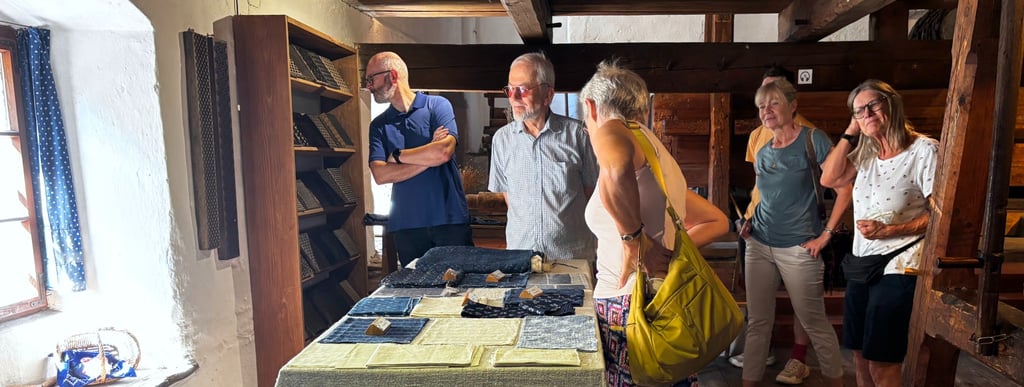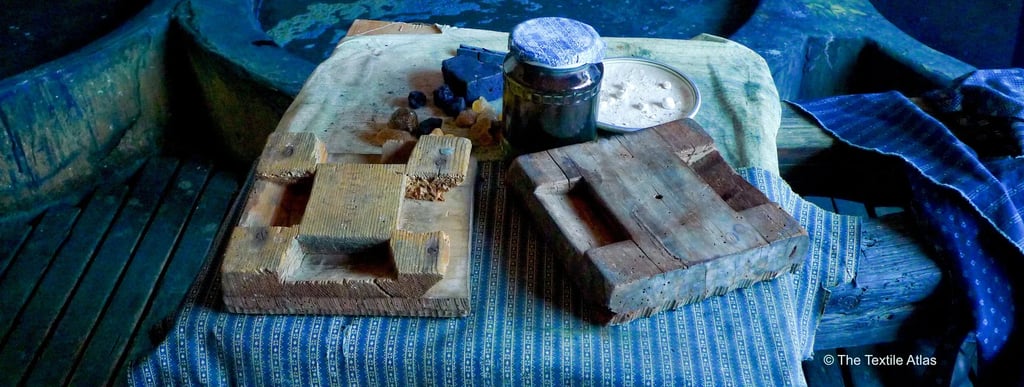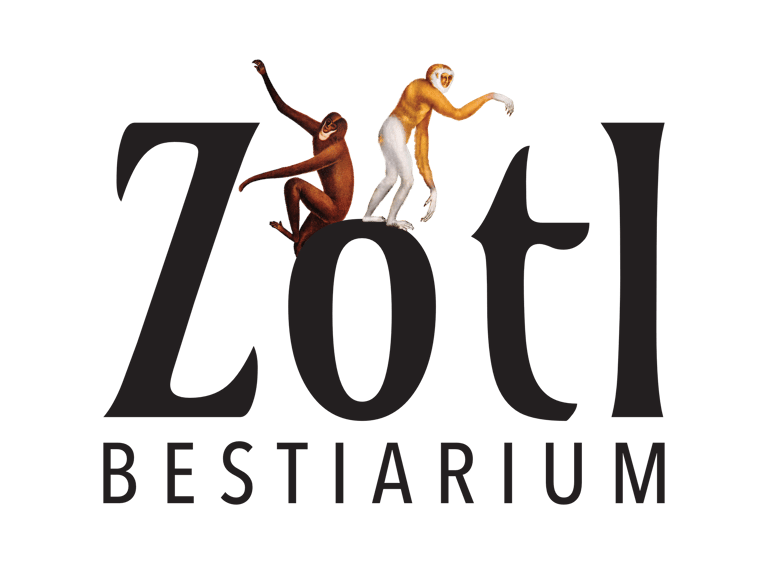The Färbermuseum is housed in Gutau’s historic Färberhaus, where dyeing and printing were carried out until 1968. This included traditional Blaudruck—an indigo resist blue print once used for rural workwear. Today, Blaudruck is prized again for folk costume, table linens, and home textiles.
At the museum you can see how indigo dyeing works and how patterns are made by printing a resist paste (“Papp”) onto fabric with carved wooden blocks (“Modeln”).
In German, several everyday idioms come from the blue‑dye workshops: Blauer Montag (“Blue Monday,” once a day off for airing cloth), ein blaues Wunder erleben (“to get a nasty surprise”), grün und blau schlagen (“to beat someone black and blue”), and jemanden in die Mangel nehmen (“to put someone through the wringer”). English keeps some of these phrases, though usually without the dyeing connection.
The centerpiece of the Färbermuseum is the Färbermangel, a 20‑foot (6‑meter) wooden press filled with 12 tons of granite, once used to smooth linen cloth.


In 2018, Austria’s centuries‑old craft of indigo textile printing (“Blaudruck”) was officially inscribed on UNESCO’s Representative List of the Intangible Cultural Heritage of Humanity. The inscription honors a unique handcraft tradition now preserved in Austria by two family‑run workshops: Original Blaudruck Koó (Burgenland) and Blaudruckerei Wagner (Upper Austria). It was achieved through a joint nomination by tradition bearers from Austria, Germany, Slovakia, the Czech Republic, and Hungary, who worked together to raise awareness for this rare technique. Blaudruck involves dyeing natural fabrics using hand‑carved wooden blocks—some more than 250 years old—to print regionally inspired patterns.
Only a handful of workshops remain across Europe, which makes this international recognition an important step in safeguarding the craft for future generations. Blaudruck now stands alongside other Austrian entries on the UNESCO list, including falconry, the Imster Schemenlauf, and the Spanish Riding School’s classical horsemanship.
Austrian Indigo Printing Added to UNESCO Heritage List




